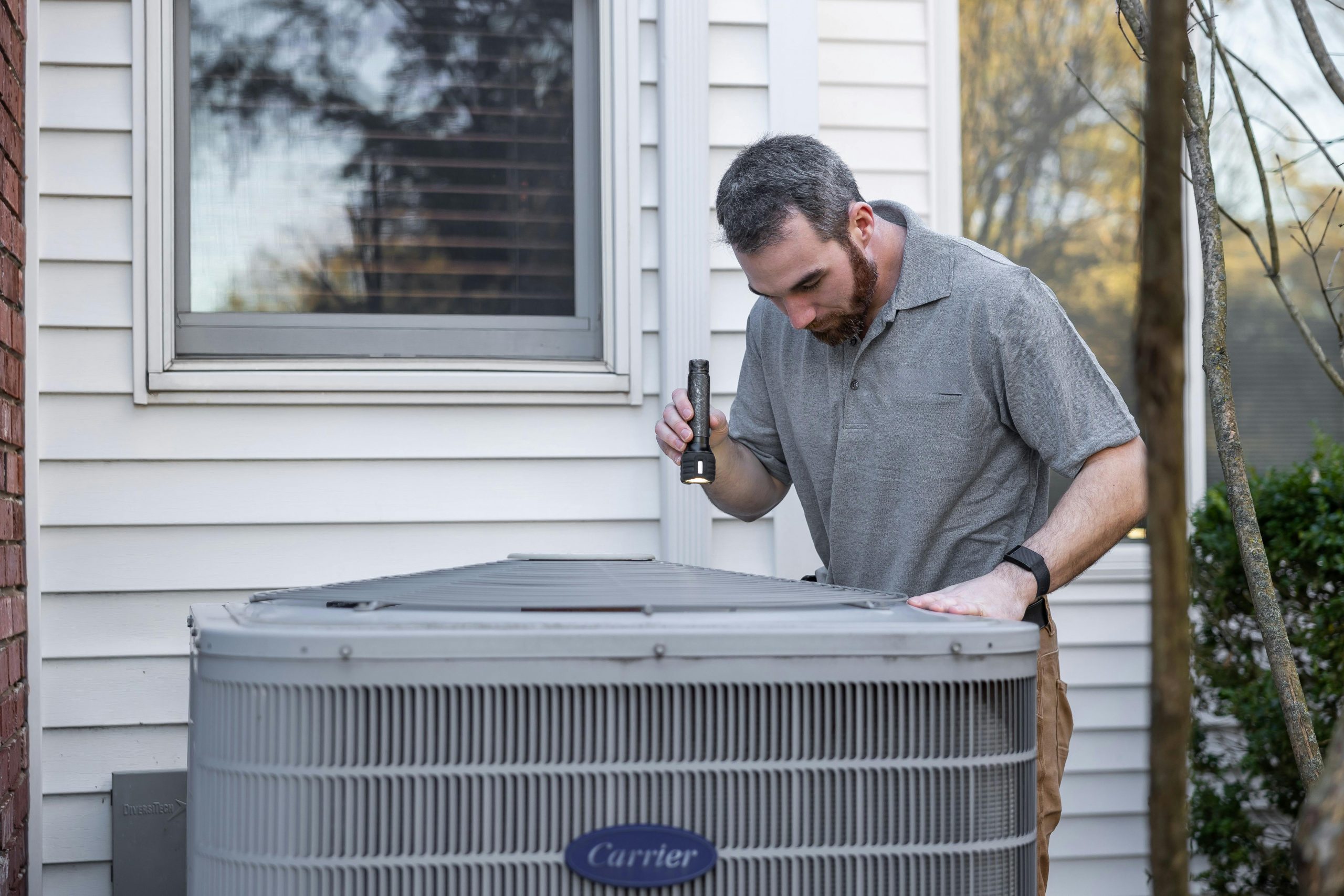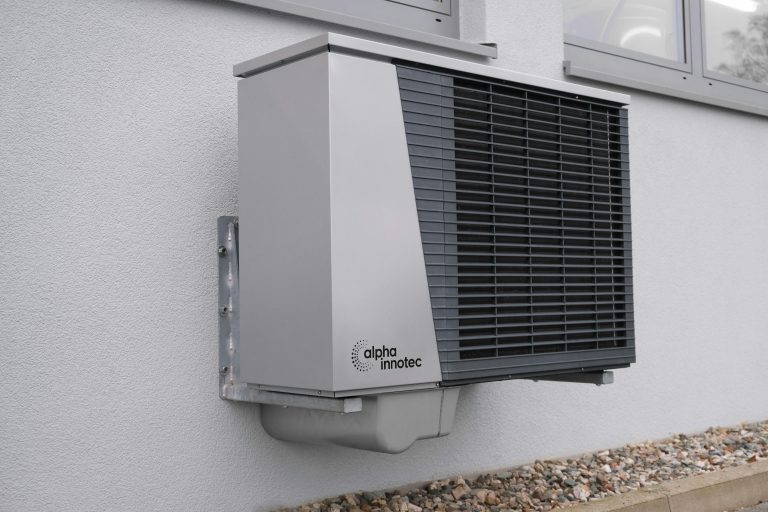- Early detection saves money: Identifying a refrigerant leak early prevents costly repairs, system damage, and higher energy bills.
- Know the common signs: Reduced cooling, longer cycles, ice on coils, hissing sounds, and higher energy bills often indicate a leak.
- Visual inspections help: Checking the indoor and outdoor units, evaporator and condenser coils, and drain pan can reveal potential leaks.
- Professional repair is essential: Handling refrigerant yourself is dangerous and often illegal; licensed HVAC technicians ensure safe and effective fixes.
- Preventive maintenance reduces risk: Regular coil cleaning, filter replacement, system checks, and monitoring performance help prevent leaks.
- Low refrigerant can cause long-term damage: Running an AC with insufficient refrigerant can harm the compressor, reduce efficiency, and shorten system lifespan.
- DIY monitoring is possible, but caution is needed: Homeowners can watch for ice buildup, unusual noises, and energy spikes but should avoid handling refrigerant directly.
Air conditioners are essential for keeping your home cool and comfortable during the hot summer months. But a problem like an AC refrigerant leak can quickly turn your cooling system into a source of frustration. Refrigerant leaks not only reduce your AC’s efficiency but can also lead to higher energy bills, poor cooling, and costly repairs if ignored. Knowing how to detect a refrigerant leak early can save you money, protect your system, and prevent damage to your home.
This guide will walk you through the signs of an AC refrigerant leak, how to check your system, and steps to prevent small problems from becoming big ones.
What Is an AC Refrigerant Leak?
Before diving into detection, it’s important to understand what a refrigerant leak is. Refrigerant is the fluid inside your AC system that absorbs heat from your home and releases it outside. When there’s a leak, the refrigerant escapes from your system, causing the AC to work harder and cool less efficiently.
Refrigerant leaks can occur in:
- Copper or aluminum tubing
- The evaporator coil inside your indoor unit
- The condenser coil in the outdoor unit
- Fittings and valves
Even a small leak can compromise performance over time. Detecting it early is key to avoiding expensive repairs or replacements.
Why Detecting a Refrigerant Leak Early Matters

An AC refrigerant leak might seem minor at first, but leaving it unaddressed can have several negative consequences:
- Higher energy bills: Your AC has to work harder to cool your home.
- Reduced cooling efficiency: Rooms may stay warmer than desired.
- System damage: Running low on refrigerant can cause the compressor to fail.
- Environmental impact: Refrigerants can harm the environment if leaked in large quantities.
- Costly repairs: Early detection usually allows for a cheaper fix than waiting for extensive damage.
Understanding these risks makes it clear why catching a leak early is essential.
What Are the Common Signs of an AC Refrigerant Leak?
While an air conditioner leaking water is easier to spot, refrigerant leaks are often harder to detect but just as harmful. However, there are several telltale signs that your system might be losing refrigerant:
- Reduced Cooling Performance: If your AC is blowing warm air or struggling to reach the set temperature, it could be low on refrigerant.
- Longer Cooling Cycles: Your AC runs longer than usual to achieve the same temperature.
- Ice on Evaporator Coils: Low refrigerant can cause the evaporator coil to freeze. Ice may form on the coil, and water may drip from it when it melts.
- Hissing or Bubbling Sounds: A refrigerant leak often produces faint hissing noises near the indoor or outdoor unit.
- Higher Energy Bills: A system with a leak consumes more electricity as it works harder to cool your home.
- Unusual Odors: Some refrigerants have a chemical smell that may become noticeable when there is a leak.
Being aware of these symptoms allows homeowners to act quickly before the issue worsens.
How to Inspect Your AC for a Refrigerant Leak

Detecting a leak often requires a combination of visual inspection and observation of system performance. Here’s a step-by-step approach:
1. Check the Outdoor Unit
- Examine the condenser coil for visible signs of oil or refrigerant residue. Leaks often leave oily streaks.
- Look for damaged or corroded tubing. Small punctures or cracks are common leak points.
- Ensure the area around the unit is clear of debris, which can hide problems.
2. Inspect the Indoor Unit
- Remove the access panel to view the evaporator coil. Ice buildup or frost is a sign of low refrigerant.
- Check for any unusual wet spots or puddles in the drain pan. These can indicate dripping from melted ice caused by a refrigerant leak.
3. Observe System Performance
- Note how long your AC takes to cool your home.
- Listen for hissing sounds that could indicate escaping refrigerant.
- Pay attention to uneven cooling or hot spots in your home.
4. Use a Leak Detection Tool
For a more precise approach, consider:
- Electronic Leak Detectors: These detect trace amounts of refrigerant in the air.
- UV Dye Kits: A technician can add UV dye to the system, which glows under a UV light at the leak point.
- Soap Bubble Test: Applying soapy water to suspected joints or connections can reveal escaping refrigerant as bubbles form.
While some of these methods are DIY-friendly, handling refrigerant itself should always be left to licensed professionals due to safety and environmental concerns.
Why You Should Avoid DIY Refrigerant Repairs
Many homeowners are tempted to fix a refrigerant leak themselves. It’s important to understand why this can be dangerous:
- Refrigerant is pressurized and toxic if inhaled.
- Improper handling can damage your AC system, especially the compressor.
- Many refrigerants are environmentally harmful and regulated by law.
- Incorrect refilling can mask the problem, leading to future leaks.
Calling a licensed HVAC technician ensures your system is repaired safely, efficiently, and in compliance with regulations.
Steps a Professional Will Take to Fix a Refrigerant Leak
When you call a professional, they usually follow these steps:
- Conduct a thorough leak detection using specialized tools.
- Repair or replace the leaking component, such as coils, tubing, or valves.
- Evacuate the remaining refrigerant safely before refilling the system.
- Recharge the system to the proper refrigerant level.
- Test the AC to ensure optimal cooling and leak-free performance.
This professional approach prevents recurring issues and protects both your system and the environment.
Preventive Measures to Avoid Refrigerant Leaks
Even after a repair, prevention is key. Homeowners can take several steps to reduce the risk of future leaks:
- Schedule Regular Maintenance: Annual inspections by a licensed technician help catch leaks before they escalate.
- Keep the Coils Clean: Dirt and debris on the evaporator or condenser coils can lead to corrosion and leaks.
- Check Connections: Periodically inspect tubing, fittings, and connections for signs of wear or oil residue.
- Monitor System Performance: Track cooling efficiency and energy usage to spot unusual changes early.
- Maintain Proper Refrigerant Levels: Never overcharge or undercharge your AC system. This should be done by a professional.
Preventive maintenance is the most cost-effective way to keep your AC running efficiently and avoid expensive repairs.
How Low Refrigerant Affects Your AC System
A refrigerant leak doesn’t just reduce cooling—it can also cause long-term damage:
- Compressor Damage: Low refrigerant levels force the compressor to work harder, potentially causing burnout.
- Increased Wear and Tear: Longer operating cycles stress other system components.
- Reduced Efficiency: Cooling performance drops, and your energy bills rise.
- Potential Environmental Harm: Escaping refrigerant contributes to greenhouse gas emissions if it’s not handled properly.
Understanding these risks reinforces why early detection and repair are critical.
Common Questions About AC Refrigerant Leaks
Can I detect a refrigerant leak myself?
Yes, some signs like ice buildup, hissing sounds, and poor cooling can be observed, but confirming and repairing a leak requires a professional.
Is it dangerous if my AC is leaking refrigerant?
Refrigerant exposure can be harmful if inhaled in large amounts. It’s best to leave leak detection and repair to a licensed technician.
How much does it cost to fix a refrigerant leak?
Costs vary depending on the source and severity of the leak:
- Minor leak repair: $150–$300
- Coil or tubing replacement: $400–$1,000
- Refrigerant recharge: $200–$600
How often should my AC be inspected for leaks?
Most experts recommend a professional check at least once a year, ideally before the start of the cooling season.
DIY Tips to Monitor for Potential Leaks
While you shouldn’t handle refrigerant yourself, there are ways to monitor your system:
- Check for ice buildup on coils or refrigerant lines.
- Listen for unusual hissing or bubbling sounds near your AC units.
- Track energy usage and cooling performance monthly.
- Inspect your drain pan for excess water or puddles.
- Schedule seasonal inspections to catch small issues before they escalate.
These steps help you spot problems early and ensure your AC remains efficient.
When to Call a Professional Immediately
Certain situations require urgent professional attention:
- Your AC isn’t cooling despite normal operation.
- You notice ice buildup or water pooling around the indoor unit.
- You detect hissing sounds or suspect a refrigerant leak.
- Energy bills spike without a change in usage.
- You see signs of corrosion, damaged coils, or leaking connections.
Acting quickly prevents costly repairs and keeps your system running smoothly.
Wrapping Up
An AC refrigerant leak may start small, but ignoring it can lead to reduced cooling, higher energy bills, and significant system damage. By knowing the common signs, performing visual inspections, and scheduling professional maintenance, you can detect leaks before they become a big problem.
Regular monitoring, prompt repairs, and preventive maintenance are key to a reliable, efficient, and long-lasting air conditioning system. Detect early, act fast, and enjoy a cool, comfortable home all summer long.
